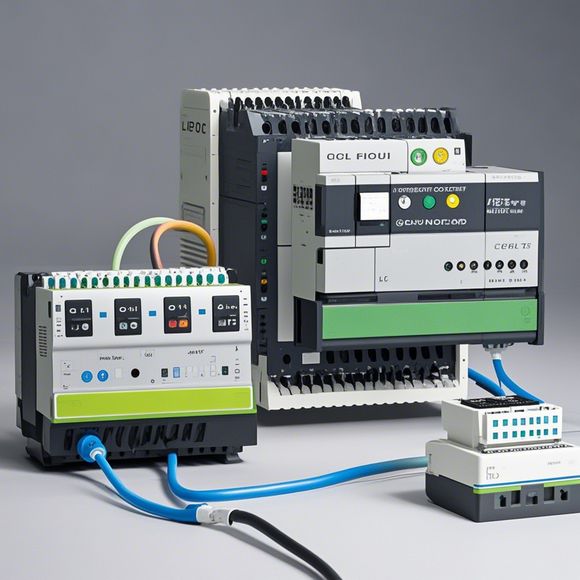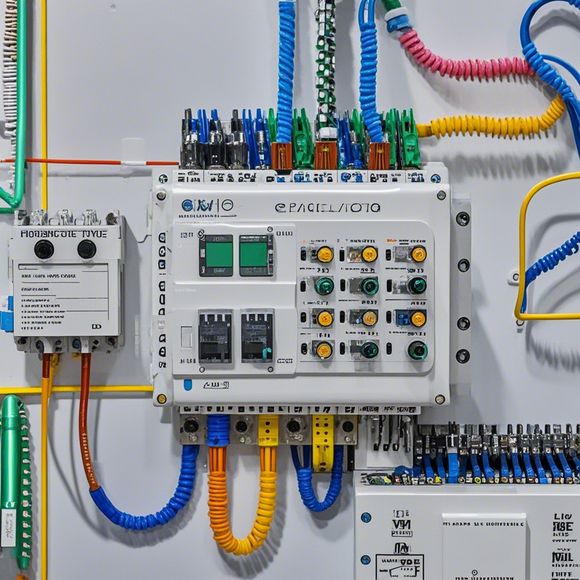What is PLC (Programmable Logic Controller)?
PLC stands for "Programmable Logic Controller", a type of industrial control system that can be programmed to perform specific tasks in manufacturing, assembly line, and other industrial environments. It is an intelligent system that allows for the automation of complex processes and reduces human error. The PLC is designed to interface with various types of sensors, switches, motors, and actuators, allowing for precise control over these components to achieve optimal results. It is commonly used in industries such as manufacturing, chemical processing, and automotive engineering, where it enables the automation of complex systems and streamlines operations.
In the world of international trade and business, understanding the intricacies of different technologies can be crucial for success. Among these technologies, one stands out: Programmable Logic Controllers (PLCs). These intelligent controllers have become an integral part of modern manufacturing processes, allowing for precise and efficient control over various industrial systems. In this guide, we will delve into what a PLC actually is, its components, how it operates, and how it can benefit businesses worldwide. So, let us begin our journey to understanding this versatile technology.

A Programmable Logic Controller (PLC) is a digital computer system designed to control and monitor a wide range of industrial processes. These devices are highly adaptable and can be customized to meet specific needs of various industries such as manufacturing, automation, construction, and more. At their core, PLCs consist of a variety of components including the Central Processing Unit (CPU), input/output modules, memory, and communication interfaces. The CPU serves as the brain of the PLC, processing data from sensors, actuators, and other devices connected to it.
Input/Output modules are responsible for receiving data from external sources and sending it to or displaying it on screens. They also handle any necessary conversions between different types of signals. Meanwhile, memories are used to store information that is needed by the CPU for decision-making. Finally, communication interfaces facilitate the exchange of data between the PLC and other systems or networks within or outside the plant. These interfaces come in various forms such as serial, parallel, and wireless connections.
When it comes to how PLCs operate, they are incredibly efficient and reliable due to their built-in features. For example, they can perform complex calculations quickly, making them ideal for applications requiring high precision. Additionally, PLCs can be programmed with various algorithms to automate tasks and optimize production processes. This flexibility makes them a valuable asset for businesses looking to streamline operations and reduce costs.
One of the key advantages of a PLC is its ability to communicate with other systems or networks. Through communication interfaces, PLCs can exchange data seamlessly with other machines or even with other manufacturers in different countries. This interconnectivity allows for greater collaboration and efficiency within a supply chain, while also reducing the need for manual intervention or repetitive tasks.
Another significant benefit of a PLC lies in its ability to adapt to changing conditions and environments. Thanks to their programmable nature, these devices can be tailored to suit specific needs without having to be replaced entirely. This flexibility ensures that businesses can maintain a competitive edge by keeping up with evolving technologies and demands.
Furthermore, PLCs can help reduce energy consumption and improve overall sustainability. Thanks to advanced control algorithms, they can optimize energy usage by managing power demands more efficiently. This not only saves money on energy bills but also contributes to environmental conservation efforts by reducing emissions and other pollutants associated with excessive use of fossil fuels.
In summary, a Programmable Logic Controller (PLC) represents a powerful tool for businesses looking to streamline their operations and enhance productivity. With its diverse capabilities such as real-time monitoring and control, customizable programming, and robust communication interfaces, PLCs can significantly improve operational efficiency, reduce costs, and promote sustainability. As such, it is no surprise that these intelligent controllers continue to gain widespread adoption across industries worldwide.
Content expansion reading:

In foreign trade operations, PLC plays a pivotal role. It stands for Programmable Logic Controller, which is a crucial component in automation systems worldwide. In simple terms, PLCs are digital computers used in industrial environments to monitor and control machines and processes. They are designed to handle the complex tasks that arise in various industries like manufacturing, processing, and other sectors.
In foreign trade, PLCs are often used to ensure seamless operations across different departments and processes. For instance, when importing or exporting goods, PLCs help in accurate tracking of inventory, ensuring timely delivery of goods to customers. They also play a vital role in maintaining the quality of products by monitoring production processes and providing real-time feedback on any issues that may arise.
Moreover, PLCs are crucial in ensuring the efficiency of machines used in production lines. They help in monitoring machine performance and provide alerts when there is a need for maintenance or repairs. This helps in preventing unexpected downtime, which can affect production and lead to losses. PLCs also help in optimizing production processes by adjusting settings and parameters based on real-time data, ensuring maximum efficiency and productivity.
In addition to their role in production and quality control, PLCs are also important in foreign trade for their role in data management and integration. With the increasing use of technology in business, data has become a valuable asset. PLCs help in collecting data from different machines and systems, providing a holistic view of operations. This data can be used for decision-making, improving processes, or integrating with other systems for better coordination and communication.
Moreover, PLCs are also important in ensuring safety in foreign trade operations. With the increasing risks of fraud and other illegal activities, it is crucial to have systems that can monitor and detect any suspicious activities. PLCs can help in this by providing real-time data on transactions and activities, enabling quick identification of any unusual behavior. This helps in preventing any illegal activities and ensures the safety of both parties involved in foreign trade.
Furthermore, PLCs are also used for remote access and control in foreign trade operations. With the ability to access and control machines remotely, PLCs enable companies to manage their operations even when they are not physically present at the site. This helps in saving time and cost, as well as improving efficiency by allowing quick response to any issues that may arise.
Overall, PLCs play a vital role in foreign trade operations. They ensure seamless operations across different departments and processes, ensure the efficiency of machines used in production lines, help in data management and integration, ensure safety in operations, and provide remote access and control capabilities. As technology continues to evolve, the role of PLCs in foreign trade will continue to grow, enabling companies to improve their operations and achieve their goals more efficiently. Therefore, it is important for companies involved in foreign trade to understand the role and importance of PLCs in their operations and invest in them accordingly.
Articles related to the knowledge points of this article:
Smart Manufacturing Solutions with PLC Integrated Machinery
PLC Programming for Automation Control in the Manufacturing Industry
How to Use a PLC Controller for Your Business
Plumbers Rule! The Role of PLC Controllers in the World of Waterworks
Connecting a PLC Controller to Your Computer
PLC Controllers: A Comprehensive Guide to Understanding Their Prices